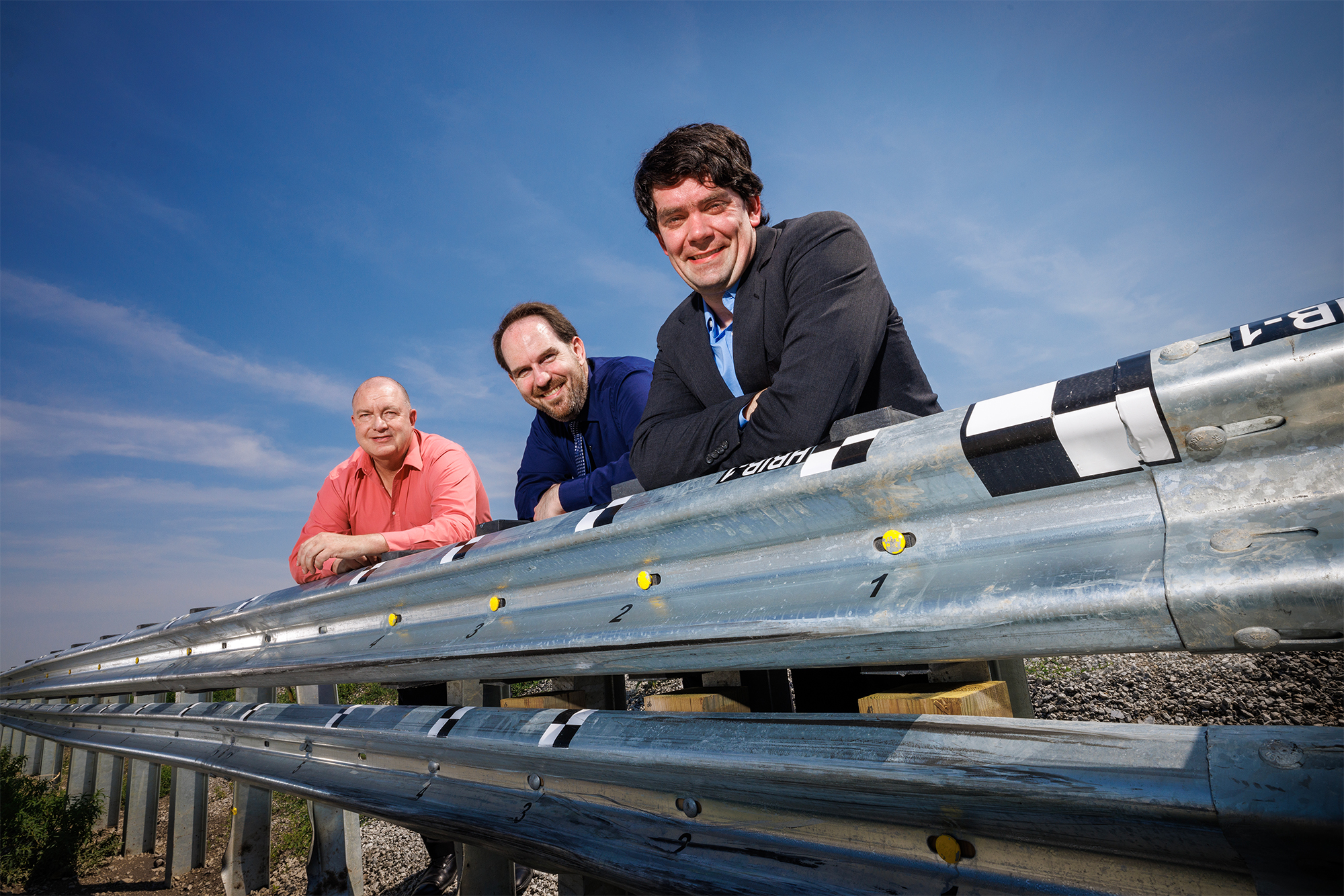As electric vehicles surge in popularity, Nebraska’s Midwest Roadside Safety Facility is sending multi-ton electric cars and trucks crashing into guardrails and military barriers to determine how well they hold up.
EVs weigh more and have a lower center of gravity than gas-fueled vehicles, which alter the forces acting on barriers. Nebraska’s facility is one of few nationally that can safely perform crash tests at the speeds and forces required.
The results: Some barriers, including guardrails, must be reengineered to stand up to a new generation of vehicles, said Cody Stolle, the facility’s assistant director.
Barriers come in many flavors. The facility recently found that many barriers designed for big commercial trucks can handle EVs.
However, guardrails used to prevent vehicles from leaving roads in rural and suburban areas and portable barriers protecting workers in construction zones will need to evolve.

“The existing infrastructure is still effective for vehicles impacting at reduced speeds and other less critical conditions,” Stolle said. “But we expect that as the proportion of EVs rises, there will be more high-speed EV crashes and we’ll see some bad outcomes. We’re trying to save all lives at all times.”
The facility pitted EVs against its own Midwest Guardrail System, which has become standard across highways in the U.S., Asia and Africa. Facility researchers also have a long history of developing world-changing barriers, such as the Steel and Foam Energy Reduction (SAFER) Barrier System, adopted by nearly all IndyCar and NASCAR racetracks.
Their expertise makes Nebraska ideally suited to collaborate with the U.S. Army in designing defense barriers capable of stopping EVs and other vehicles intent on harm at U.S. military bases worldwide.
The facility’s crash tests provide vital baseline information necessary to redesign barriers. The team also uses sophisticated modeling and simulations to develop next-generation defensive barriers and guardrails.
Facility researchers are collaborating with governments and industry groups, seeking feedback and providing information to ensure better informed decision-making nationwide.
“We are an international leader on the topic of roadside safety, especially evaluating these generational changes,” Stolle said.
Nebraska is collaborating with Auburn University and the U.S. Army Engineer Research and Development Center, which funds the project.
